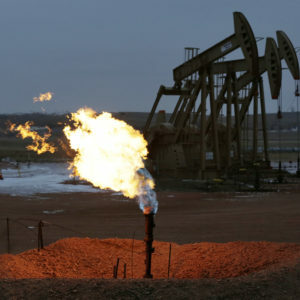There’s a sneaky climate villain flying under the radar these days: methane gas. With all the focus on decarbonizing the energy sector and reducing carbon dioxide already in the atmosphere, it can be easy to forget that methane is 25 times more potent.
Methane gas is emitted from petroleum and natural gas producers and from landfills and agricultural practices. Methane gas accounts for 16 percent of greenhouse gasses emissions, a number dwarfed by the whopping 76 percent of emissions that is carbon dioxide.
Methane gas is a master at trapping heat in the atmosphere, but we think about it less than carbon dioxide because methane dissipates in 12 years, compared to carbon dioxide’s shelf-life of hundreds of years. Yet, when its potency is taken into account, there’s no doubt that methane is a serious driver of rising temperatures.
Methane affects atmospheric temperatures almost immediately, while carbon dioxide is a steady uphill climb. For example, releasing methane is like putting a burner on high until the water boils, and releasing carbon dioxide is putting a pot on simmer all night. You get a similar result but in very different time frames.
There is undoubtedly some emphasis on methane reduction on Capitol Hill. The infamous — and partisan — Inflation Reduction Act that President Biden signed last year included a methane fee, which, in theory, would encourage energy producers to reduce the possibility of leaks during production. This fee was a compromise between Senate climate hawks on the left and centrist Sen. Joe Manchin of West Virginia.
Now in control of the House of Representatives, some Republicans are working to eliminate that methane fee. The legislation to do so was included in the Lower Energy Costs Act, which has now passed the House twice — once on its own and once in the debt ceiling package.
While the merits and trickle-down effects of a fee can be debated, reducing methane emissions as a concept should be a bipartisan issue.
In fact, the oil and gas industry is even on-board with further regulating methane gas. BP, for instance, is working to reduce methane leaks during its operations and has supported an EPA rule on the matter. Once again proving the power of American innovation, various oil and gas companies have made moves to reduce methane during the extraction process. From 1990 to 2020, methane emissions decreased 17 percent, compared to an 8 percent decrease in carbon emissions.
Reducing methane emissions is common sense from a policy perspective and a good business practice. There’s not just one way to reduce methane emissions. Innovative technologies and real-time trackers in the oil and gas industry help reduce these emissions, but so does simply changing cattle’s feed in the agricultural sector. Reductions in methane emissions significantly change the short-term trajectory of climate change, given the gas’s potency.
Although there will continue to be policy debate on how to actively reduce methane emissions, it’s an issue that Republicans and Democrats should be able to stand together to solve. Just as the Senate unanimously ratified the Montreal Protocol in 1988 to heal the ozone layer, Congress can unite to reduce levels of “carbon’s evil little brother” in the atmosphere.


